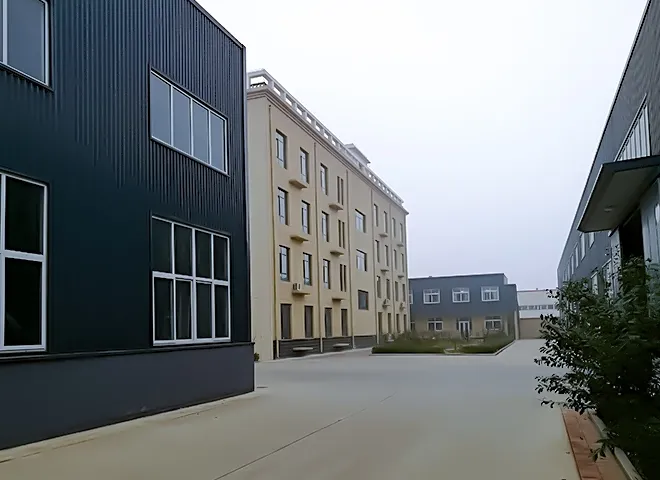single needle lockstitch machine threading
Understanding Single Needle Lockstitch Machine Threading
The single needle lockstitch machine is a staple in the world of sewing, widely used in various industries, from fashion design to upholstery. Mastering the threading process of this machine is essential for achieving professional-grade results in sewing projects. In this article, we will explore the fundamental aspects of threading a single needle lockstitch machine, including its components, step-by-step instructions, and troubleshooting tips.
Components of a Single Needle Lockstitch Machine
Before diving into the threading process, it's crucial to understand the key components involved
1. Needle The needle is responsible for piercing the fabric and creating stitches. It has a hole (or eye) where the top thread passes through.
2. Bobbin This is a small spool that holds the bottom thread. The lockstitch machine creates a stitch by looping the top thread around the bottom thread, which originates from the bobbin.
3. Thread Tension Discs These discs control the tension of the top thread, ensuring that it flows smoothly and evenly.
4. Take-Up Lever This component moves up and down during sewing, taking up the slack in the top thread with each stitch.
5. Presser Foot The presser foot holds the fabric in place while sewing and can be raised or lowered as needed.
Step-by-Step Threading Instructions
Now that we understand the components, let’s walk through the threading process for a single needle lockstitch machine
1. Turn Off the Machine Always begin by turning off the machine to prevent accidents while threading.
2. Raise the Presser Foot Lift the presser foot to ensure that the thread can be properly tensioned when running through the machine.
3. Position the Thread Spool Place the thread spool onto the spool pin, usually located at the back or top of the machine. Ensure the thread unwinds in the right direction.
single needle lockstitch machine threading

4. Thread the Tension Discs Guide the thread down through the thread guide and between the tension discs. It’s essential to pull the thread firmly but not excessively to avoid breaking it.
5. Thread the Take-Up Lever Bring the thread up and thread it through the take-up lever. This step may require you to rotate the handwheel towards you to lift the take-up lever for easier access.
6. Guide the Thread Down After threading the take-up lever, guide the thread down towards the needle area, ensuring it passes through any additional thread guides along the way.
7. Thread the Needle Insert the thread through the needle's eye from front to back. Some machines come with a needle threader that can simplify this step.
8. Prepare the Bobbin Wind the bottom thread onto the bobbin if it isn’t already. Insert the bobbin into its case, ensuring it rotates in the direction specified in the machine's manual.
9. Draw Up the Bobbin Thread Hold the top thread and turn the handwheel towards you to lower the needle. This action should cause the needle to pick up the bobbin thread. Pull both threads out to a length of approximately six inches.
10. Lower the Presser Foot With both threads drawn out from under the presser foot, you are now ready to lower it and start sewing.
Troubleshooting Common Threading Issues
Threading can sometimes lead to frustrating problems. Here are a few common issues and their solutions
- Thread Breakage If the thread breaks frequently, check if it is threaded properly and ensure the tension is not too tight.
- Loose Stitches If your stitches appear loose or uneven, it could be due to incorrect tension settings. Adjust the tension discs incrementally.
- Bird Nesting This occurs when threads tangle underneath the fabric. Ensure the bobbin is inserted correctly and that you have drawn up the bobbin thread properly.
In conclusion, mastering the threading of a single needle lockstitch machine is essential for anyone involved in sewing. By understanding its components, following a systematic approach to threading, and knowing how to troubleshoot common issues, you can enhance your sewing skills and produce high-quality work. Whether you're a beginner or a seasoned professional, perfecting this fundamental skill will significantly improve your sewing experience.
-
Industrial Cylinder Arm Sewing Machine: Revolutionizing Heavy-Duty SewingNewsJul.28,2025
-
Cylinder Arm Sewing Machine: Perfect for Special Sewing ApplicationsNewsJul.28,2025
-
Cylinder Bed Sewing Machine: Essential for Sewing Complex MaterialsNewsJul.28,2025
-
Heavy Duty Sewing Machine: The Essential Tool for Industrial ApplicationsNewsJul.28,2025
-
Computerized Pattern Sewing Machine: Revolutionizing Precision StitchingNewsJul.28,2025
-
Heavy Duty Industrial Sewing Machine: Power Meets PrecisionNewsJul.28,2025
-
Leather Sewing Machine: The Industrial Standard for Tough MaterialsNewsJul.18,2025





























